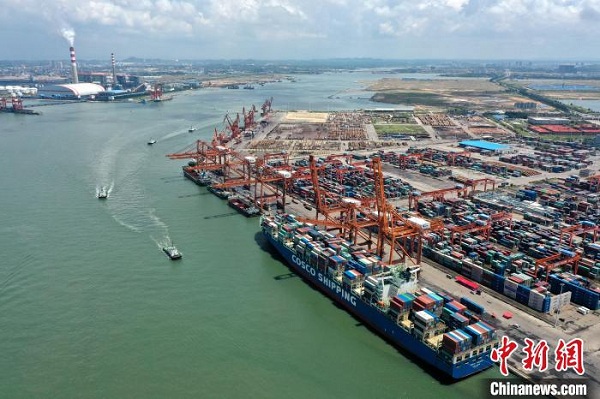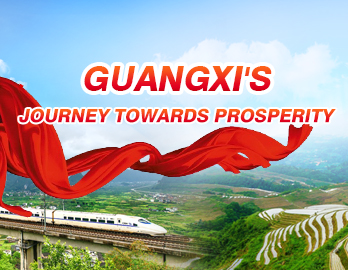Land-sea trade corridor grows after five-year development
Updated: 2020-10-19

An aerial view of the Beibu Gulf ports. [Photo by Yu Jing/chinanews.com]
The New International Land-Sea Trade Corridor has seen remarkable achievements after five years of construction as it has grown into a comprehensive opening-up channel connecting the Belt and Road.
Teo Siong Seng, executive chairman of Pacific International Lines (PTE) Ltd, said during the 11th Pan-Beibu Gulf Economic Cooperation Forum that the land-sea trade corridor not only connects Southeast Asia and West China, but also links countries in Central Asia and Europe, boosting the sharing of more efficient, convenient, and low-cost trade service among countries alongside the corridor.
Wojciech Zajaczkowski, Polish ambassador to China, noted that the number of China-Europe freight trains passing through Poland has been increasing in recent years and that more than 90 percent of the cargo heading for the European Union from China entered the EU border from Poland and Belarus.
"Statistics show that the China-Europe freight trains have great potential and that Poland has been devoting efforts to becoming an important logistics hub between East Asia and Europe," said Zajaczkowski.
The handling capacity of cargo and containers at Beibu Gulf ports in the first nine months of 2020 increased by around 20 percent and 35 percent each, while Chongqing, another important hub on the other side of the land-sea trade corridor, has conducted more than 5,842 China-Europe freight trains by August, ranking first in terms of the number of trains in China.
A total of 2,238 sea-rail combined trains on the land-sea trade corridor have been operated by August, covering 213 ports in 88 countries around the world.
Wang Anshun, deputy director of the Development Research Center of the State Council, said that China and ASEAN should further enhance communication and cooperation to increase the connectivity level of the land-sea trade corridor through measures spanning increasing capacity of transport infrastructure, as well as facilitating trade and investment.



